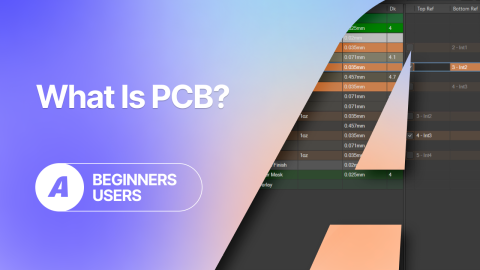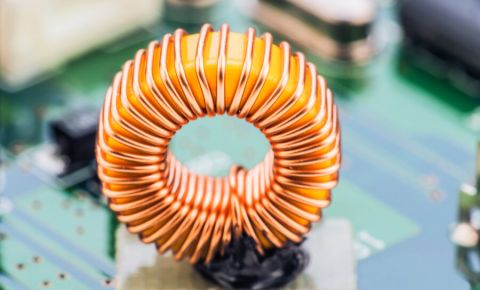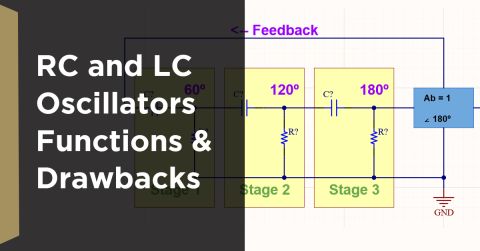Standard PCB Thickness and Your Layer Stack

I’ll confess that I love 1990’s sitcoms. If Jerry Seinfeld were a PCB designer, he would probably ask “what’s the deal with the 1.57 mm board thickness?” It’s a fair question after all, and it makes you wonder why some standard values (e.g., 50 Ohms impedance in RF systems) are used in PCB design and other areas of engineering.
There are good reasons why these and other design values have become in standardized in PCB design, even if they aren't explicitly defined in industry standards. Regarding PCB thickness, the reason is largely historical, as we'll see in a moment. However, the standard circuit board thickness of 1.57 mm is not the only thickness you can access in your board, although most manufacturers center their fabrication capabilities specifically to accommodate this value. If you've
Why 1.57 mm Board Thickness: A History Lesson
Lee Ritchey has nicely summed up the history of the de facto standard 1.57 mm board thickness. Without repeating everything Lee says about circuit board thickness values, I'll briefly summarize the reasons this number became a de facto standard within the industry.
When electronic devices were transitioning to transistors and integrated circuits, boards were built by breadboarding on plywood workbenches, where the top layer of a plywood sheet was replaced with a material called Bakelite. If you are familiar with plywood, then you know that the thickness of a single ply in plywood is 1/16 in., or 1.57 mm. This thickness then became something of a standard when board-to-board connections became necessary and got adapted to newer materials. Early board-to-board connections used rack units with edge connectors, and these edge connectors needed to match this standard thickness. Nowadays, instead of Bakelite, we use materials that allow etching and plating, and FR4 epoxy laminates.
Alternative PCB Thickness Values
Today, routing guidelines for some products (e.g., PCIe add-in cards, Mini-PCIe cards, or SODIMM sticks) or application notes will specify 1.57 mm (or a less common value of 1.0 mm). However, if you think about it, you’ll realize there is no reason for this PCB thickness to be preferable over any other board thickness value aside from manufacturability, or possibly to accommodate a high layer count or high copper weight. Many manufacturers opt for this circuit board thickness with lower layer counts because that’s the way it’s always been and that's what is generally expected from most customers.
While 1.57 mm value is something of a required capability for any manufacturer since it's become a de facto standard, many manufacturers have adapted their capabilities to fabricate boards with various multiples of this thickness. Two other PCB thickness values you might find from some manufacturers are 2.36 mm and 3.18 mm, which just happen to be 150% and 200% of the 1.57 mm board thickness. However, you can typically order 1.0 mm or some other value as long as the particular thickness value is manufacturable.
Different manufacturers can fabricate boards with different layer counts and copper weights, and many will offer their set of “standardized” PCB thickness values and layer arrangements. Fabricators can also accommodate alternative circuit board thickness values as long as they can verify the board will pass through their process with no defects. This is why you should contact your fabricator to review your stackup before you start your design, or you should use a highly standardized stackup (2-layer or 4-layer PCB stackup) if it's applicable. Fabricators that require (or prefer) specific thicknesses and layer arrangements sometimes make their stackups available online in a stackup table. You can typically download this data, or you can send an email asking them to look at your layer stack and board thickness if a stackup table is unavailable.
Board, Dielectric, and Copper Thickness
Once you've decided on the overall board thickness, you have three points left to consider:
- Copper thickness on each layer
- Dielectric layer thickness
- Solder mask thickness
Solder mask thickness and PCB copper thickness are easy: 0.4-0.8 mils is a standard range for solder mask thickness; Altium Designer uses 0.4 mils as the default solder mask thickness value in a new stackup. Copper thickness (in mm) will depend on your copper weight, which will appear in standardized increments. The equivalent copper thickness for a given weight can be calculated with the following formula:

While there is a general 4-layer PCB thickness and stackup format (assuming 1.57 mm total PCB thickness), there is no "standard" 4-layer stackup. An example 4-layer PCB stackup that forms a good starting place for determining dielectric thicknesses is shown below.

In this example, we have a thick core with thinner dielectrics supporting the outer layers. I've shown this as an example as it can be readily built from 370HR dielectrics and will support high speed components on smaller boards. You might see thinner core layers (we did 28 mils with the same dielectrics in a recent design), and your fabricator will probably have something to say about your copper weight as they might have preferred values for their processes.
Calculating Your PCB Thickness and Layer Arrangement
In general, there is a simple process you can follow to determine PCB thickness and layer thickness values in your new design:
- Determine your required layer count, typically by considering net count and approximate net density
- Assume for the moment 1 oz./sq. ft. copper weight, and determine the total thickness to be allocated to leftover layers
- Get a list of available dielectrics from your desired materials manufacturer and assign layer thicknesses as required for your design
- Send the proposed stackup to your fabricator in for review
If your fabricator has a standard set of materials they use, they can generally give you a stackup with alternative materials based on IPC slash sheets. Some fabricators will combine their available materials into a custom stackup that meets your impedance and loss requirements, and they won't always force you to fit to a specific stackup.
At the end of the day, you shouldn't choose your PCB fabricator based only on price. Consider your design needs first, and think about your application requirements (including PCB thickness), and then pick the fabricator that can design to those needs. When you get to something much thicker, like a high layer count backplane, the 1.57 mm standard thickness value is no longer used. In more specialized high speed/high frequency boards, you'll also likely be using more specialized high-frequency materials. Make sure to consult your fabricator for guidance to ensure your design will be producible with high yield and quality.
Once you’ve determined your required layer count and PCB thickness, you need PCB design software that gives you full control over your layer stack as you work through your design. The layer stack manager, material stackup library, and full suite of design features in Altium Designer® are ideal for designs of any complexity, and you'll have a complete set of tools needed to prepare your board for review by your fabricator. When you’ve finished your design, and you want to release files to your manufacturer, the Altium 365™ platform makes it easy to collaborate and share your projects.
We have only scratched the surface of what’s possible with Altium Designer on Altium 365. Start your free trial of Altium Designer + Altium 365 today.












